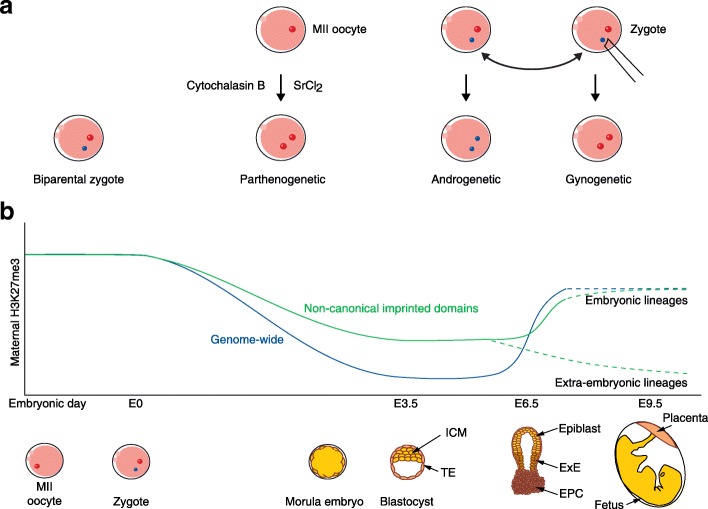Fig. 1.
a The generation of embryos with only maternal or paternal genetic contributions is a valuable tool in studying genomic imprinting. Parthenogenetic embryos can be generated by treating ovulated metaphase-II (MII) oocytes with cytochalasin B to prevent extrusion of the second polar body and artificially activating with strontium chloride (SrCl 2). Androgenetic and gynogenetic embryos are created through the micro-manipulation of fertilised zygotes, where the maternal or paternal pronucleus is replaced with the contrasting pronucleus from another zygote. b Dynamics of maternally-derived H3K27me3 during embryogenesis. H3K27me3 forms broad domains in the oocyte and, upon fertilisation, maternal H3K27me3 decreases until the formation of the embryonic day 3.5 (E3.5) blastocyst [6]. Non-canonical imprinted domains are those that retain relatively more maternal H3K27me3 during this phase of decline, resulting in paternal-specific DNase hypersensitivity sites and gene expression [2]. Post-implantation, there is re-acquisition and re-localisation of H3K27me3 in the embryonic epiblast [6] and correspondingly a loss of non-canonical imprinted domains [2]. Meanwhile, the post-implantation extra-embryonic lineages show a gradual decline in non-canonical imprinting mediated by H3K27me3 [2], although the distribution and localisation of maternal H3K27me3 is currently unknown. ICM inner cell mass, TE trophectoderm, ExE extra-embryonic ectoderm, EPC ectoplacental cone

